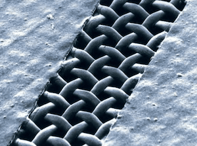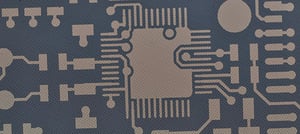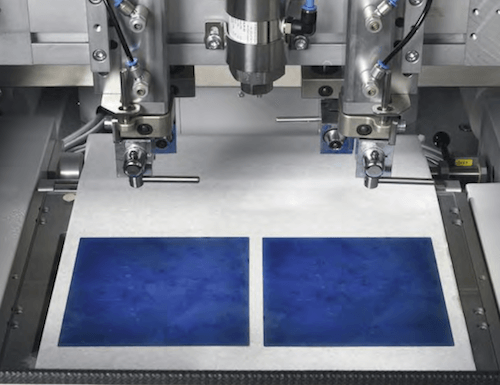What Is the Best Mesh Count for Screen Printing?
Screen printing mesh plays an integral role in everyday life, whether it’s used to produce the circuit boards in phones or logos on various products. To deliver quality products, screen printing designers must determine the best specification to transfer designs.
But what mesh count should you be using?
W.S. Tyler has delivered premium stainless steel screen printing mesh for several decades and is here to help you use the best possible mesh specification.
This article will provide insight into what screen printing is, what stainless steel screen printing mesh is, how to select the right mesh count and the drawbacks associated with not using the right mesh count.
What Is Screen Printing?
Screen printing is the century-old technique in which ink gets transferred to a surface to achieve a specific design. To ensure accuracy, an emulsion gets infused into a mesh screen, forming a stencil that blocks ink from reaching areas outside the design.
While silk was the first preferred screening media, nylon, and stainless steel currently stand as the standard. This article will focus on stainless steel mesh.
What Is Stainless Steel Screen Printing Mesh?

Stain steel wire mesh is best described as several individual stainless steel wires interlaced together to form a roll or sheet of wire cloth. As the mesh is woven, the wire diameter, opening (aperture) size, mesh count, width, and length are pre-determined and customizable.
But what makes stainless steel stand out among the other screen materials?
When compared to other materials, stainless steel wire mesh offers several benefits, including tensioning capabilities, durability, cost savings, and ink distribution accuracy.
For an in-depth breakdown of all the benefits stainless steel offers to the screen printing industry, refer to our article: Wire Mesh for Screen Printing (Benefits, Alternatives, and Cost).
Selecting the Right Mesh Count
Generally, mesh counts ranging from 25 mesh to 305 mesh are ideal when screen printing. Mesh count is the number of openings within an inch in any direction.
This means a 305 mesh screen is much finer than a 25 mesh screen.
Regardless of the screening material, the mesh count depends on the level of detail of the design. The inks/material(s) used to fuse the design to the surface also affect mesh count selection.
To put this into perspective, let’s say you produce circuit boards for smartphones. Screen printing helps to apply a solder mask, which protects the inner alloys when solder gets applied to the board. 
The conductive tracks of the circuit board must be exact to prevent shorts or product failure. To ensure optimal results, a finer mesh, 160 to 200, is ideal when applying the solder mask.
Now, let’s say you are screen printing sans serif fonts and shapes onto a ceramic surface. These design elements don't have a lot of detail and are transferable using a 60 to 110 mesh screen.
So what are mesh counts 200 and above used for?
Well, the fine mesh counts are specifically used for high-detailed designs. That said, they should only be used when a minimal amount of ink is needed to depict the desired look.
What Are the Drawbacks of Using the Wrong Mesh Count?
As with any extrusion operation or particle analysis process, the mesh count you use to screen print is critical. That said, failure to use the right mesh count can hinder the ink’s ability to depict the design.
When it comes to the use of inks, some inks are thick while water-based inks tend to be thin and runny.
Using a mesh count that is too fine (160-305) with a thicker inks can prevent the ink from making its way through the mesh and result in a patched design. Using a mesh count that is not fine enough (25-110) with a runny, water-based ink can allow too much ink to flow, making it hard to set.
Additionally, mesh openings that are too large when working on a high-detailed design can result in ink bleeding, losing detail.
Now, screen printing for branding purposes sometimes calls for the use of enhancing pigments, like glitter. If this is the case, you will want to make sure you use a mesh count low enough for these pigments to flow through the mesh.
Using too fine of a mesh count for such applications may cause the mesh to become plugged. This will hinder the paint's ability to adhere to the surface.
How Does the Cost Affect Mesh Count Selection?
Several factors will affect the price of a screen printing mesh. These factors include the quantity of mesh, fabrication needs, and mesh count.
That said, the mesh count is the biggest cost factor. This is because setting up a weaving loom is a labor-intensive process.
When weaving finer mesh counts, this process can even take several days.
In other words, the finer the mesh count, the higher the price. Generally, stainless steel screen printing mesh costs around $3 to $15 per square foot.
With that, you should always use the lowest mesh count possible.
Enhance Your Design Production With Stainless Steel Screen Printing Mesh
Screen printing is a traditional method of transferring the desired design onto a surface through the use of various inks. Silk was first used to create screen printing mesh, but designers have turned to alternative materials.
Materials, such as stainless steel, are now the standard as they are more sturdy.
With mesh counts ranging from 25 to 305 mesh, screen printing mesh specifications get determined based on the level of delta required and the materials used.
For applications that call for precision and high detail, a fine mesh count 160 and up is the ideal solution. If the application uses design elements that don’t have a lot of detail, lower mesh counts 25 to 110 are ideal.
Regardless of the task, you should always use the lowest mesh count possible to ensure your operation is as efficient as possible.
Having worked in the world of screen printing for several decades, we are here to help you construct the perfect stainless steel screen printing mesh for your business.
For more information on the different types of screen printing mesh, refer to our screen printing mesh product page.
About Ronnie Brown
Ronnie is the Content Writer for W.S. Tyler and has four years of experience as a professional writer. He strives to expand his knowledge on all things particle analysis and woven wire mesh to leverage his exceptional writing and graphic design skills, creating a one-of-a-kind experience for customers.




